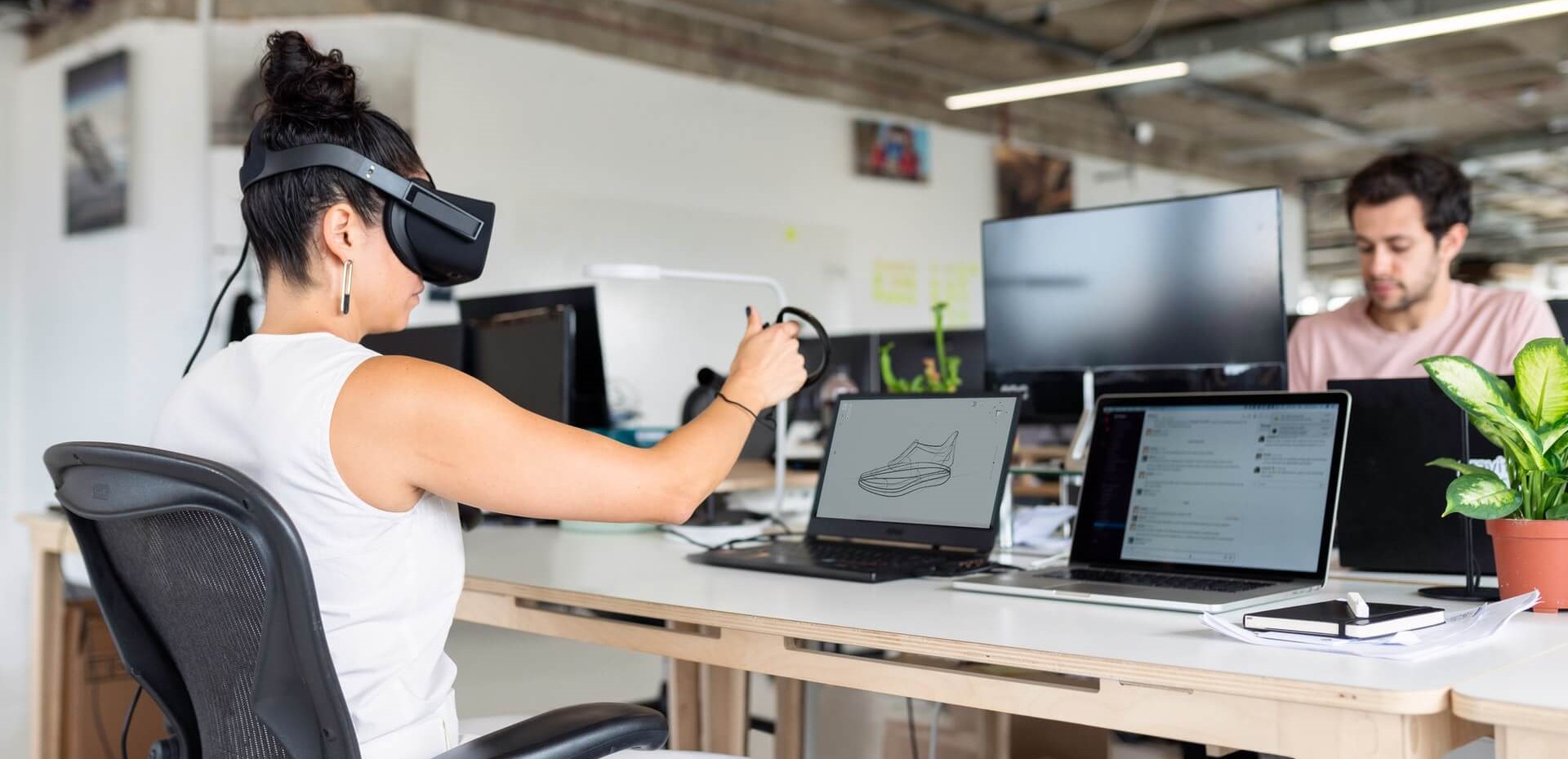If you’re a business owner, you’ve undoubtedly invested significant time and resources to ensure that your team is smart. But, have you done the same for your workplace? Recent technological innovations are transforming the office, and this is a trend you can’t afford to ignore if you want to retain your talent. Smart offices should be considered the future of the workplace.
What is a smart office?
The basic definition of a smart office is a workplace that leverages technology to improve productivity and efficiency. You’re probably familiar with how smart technology interacts with the consumer experience—for example, how companies use data to tailor advertising and discounts to each customer’s specific preferences. A smart office does the same but for employees. A smart office adapts to the needs of a company and its employees. For this reason, each smart office will be unique. The overall objective of a smart office is to empower employees to work at their highest and best level. It achieves this by taking on simple but time-consuming tasks so that employees can focus on the most important elements of their job.
The growth of the smart office
The smart office market is expected to explode in the near future. According to Million Insights, a market research firm, we can expect it to reach 57.5 billion USD globally by 2025.
One of the key drivers of this growth will be the increasing adoption of the Internet of Things for business solutions. Examples of this include security sensors, smart lighting, and furniture programmed to adjust to each user’s preferences.
Companies such as Johnson Controls, ABB Ltd; Cisco Systems, Inc; Honeywell International, Inc; and Siemens AG are likely to be key players in the industry as smart technology goes mainstream.
Smart offices and COVID-19
A huge contributor to the growth of smart offices has been the COVID-19 pandemic. This makes sense, as workplaces have been forced to adapt quickly to drastically changing circumstances. Smart technology can support companies to implement these changes more simply and efficiently.
One way smart technology is being used to keep offices safe as people begin to return is to help calculate office occupancy. Many companies are operating on a rotating schedule at the moment to maintain social distancing. Technology can be used to monitor the population in a workplace and their proximity to one another. It can also allow employees to book their own workdays and desks.
A smart workplace that monitors and regulates humidity using technology can also reduce the risk of airborne contagion.


Advantages of a smart office
Why should companies invest in smart technology? Here are seven benefits your business could experience when offices are modernized in this way.
1. Increased productivity
If you make it as easy as possible for your employees to fulfill straightforward tasks, such as organizing meetings and booking meeting spaces, they have more time to focus on the most important responsibilities of their role.
2. More efficient use of office space
Continuing with the example of meeting spaces, think about how many reserved rooms eventually go unused to the detriment of other employees. Smart technology can immediately identify no-shows, meaning rooms are made available to those who need them.
3. Enhanced collaboration
If employees can easily locate, communicate and cooperate with other team members, then there are more opportunities for knowledge-sharing and cross-departmental collaboration.
4. Gain actionable insights
You may believe that your office is designed to be perfectly fit for purpose. However, it’s probably being used in ways that are different from how you intend it to be. You can learn what is successful about your office environment and what could be improved by using smart technology.
5. Attract top talent
If you want to attract the next generation of top talent, you’ll need to meet their expectations. The traditional office is becoming obsolete. You can improve on it using smart technology to make it more modern and suitable for work by, for example, using smart lighting and temperature solutions.


6. Improve staff wellbeing and retention rates
Smart technology removes the annoying little tasks that take up your team’s time and makes their workday experience more positive. Smart furniture adapts to ensure they’re comfortable during the workday. A more pleasant office environment encourages staff to stay with your company.
7. Quicker repair times
Smart technology can make it easier for team members to report issues to the correct point of contact. This reduces downtime and disruption, making operations more efficient.
7 smart features you might consider adding to your office
1. Smart desks and meeting rooms
Help your employees to adopt excellent posture as they work by providing smart desks. You can also monitor which desks or meeting rooms are being used and which are vacant. They can be booked more efficiently, too.
2. Video monitoring systems
Traditional security cameras aren’t always fit for purpose. Modern video monitoring systems can view different parts of your space from various angles, using diverse light settings and zooming in when required. In addition, you can store footage in the cloud.
3. Gamification strategies
Why not make work more enjoyable for your team members? Smart offices can make the day-to-day tasks of the job more stimulating by turning them into a game. Sensors might record efficiency levels to introduce an element of competition, for example. Employers can then reward especially effective employees.


4. Intelligent climate and lighting control
A common workplace conflict occurs when one group of people prefer to work in warm temperatures, and others prefer a cooler climate. Smart technology can empower employees to make changes to their work environment, which can boost employee morale.
5. Voice control
Many of us now use technology like Alexa and Siri at home. There are business versions of this smart technology that respond similarly to voice commands. This could be used to book a room, send an email, or print a document. As with most smart technology, once employees get used to this resource, it can enhance productivity levels.











